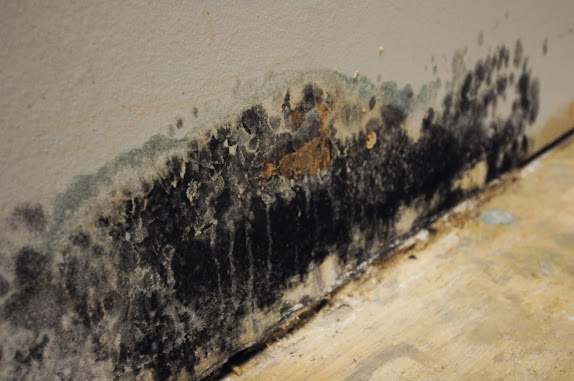21 Facts About Mold
But what about the mold that develops along the grout in a bathroom or on a basement wall? Mold in the home can cause material and structural damage and can be a health hazard. Do you know your mold facts? The mold remediation professionals at ServiceMaster of Savannah have compiled 21 facts about mold everyone needs to know.
- Mold needs moisture to grow. Outdoors, mold grows in the soil, on vegetation and on decaying materials. Indoors, mold thrives in damp, moist conditions like bathrooms, basements, or even behind drywall where there's been water damage.
- Mildew is a kind of mold, which means mold and mildew have a lot in common. They are both fungi, are often found inside homes, thrive in moist environments, spread from surface to surface easily, and may cause problems with your health and your home.
- There are four common types of indoor mold: Alternaria, Aspergillus, Cladosporium and Penicillium.
- Often, mold found in a home appears greenish-gray, brownish-green, gray, and even black. You may find slimy green mold on the exterior growing on vinyl siding located in an area that receives little to no sun. This mold usually can be removed with a power washer.
- Mold, a fungi, spreads by spores, which act as seeds to form new mold colonies.
- Some mold spores do contain toxins that can cause health issues when inhaled. People with mold allergies, pregnant women, anyone suffering from asthma, and those with a compromised immune system or respiratory conditions shouldn't be exposed to mold. This is why mold remediation by professionals is essential.
- Health risks of mold may include, but are not limited to, headache, fever, cough, wheezing and flu-like symptoms. It can trigger asthma attacks as well.
- The terms "toxic mold” or “black mold" refer to Stachybotrys chartarum. Typically, it's greenish-black in color and develops after a space has suffered heavy water damage. It, and all other kinds of mold, needs to be removed safely by professionals trained in mold removal.
- Mold on a shower curtain or in the tile's grout around a tub can be removed by a homeowner. Bleach removes mold, but remember to only use it in a room that's well-ventilated. Also, some types of tile will etch with bleach contact, so make sure to spot-check the bleach before using around the entire tub.
- Running a bathroom fan can help reduce the development of mold in the room. Open glass shower doors to allow ventilation and never bunch a shower curtain; instead, keep it open so it can dry thoroughly. Remember, mold needs moisture for growth.
- A musty, mildewy smell in the basement is not natural. It's likely mold due to water damage, a cracked foundation, or leaking pipes.
- If that musty, mildewy smell is present in your home, it's important to locate the source of the smell or the location of the mold.
- For mold growth in a residential home, the CDC does not recommend mold sampling or testing.
- Keeping indoor humidity levels below 45 percent can inhibit mold growth.
- Condensation on windows, walls, and other hard surfaces is a sign of high humidity in the home, which increases the risk for mold development.
- After a water damage event (flood, burst pipe, or firefighting efforts), mold can begin to grow within 24 to 48 hours.
- Mildew, a type of mold, easily develops on cardboard, books, and even fabrics. Store old clothes and other items in water-resistant containers instead of cardboard boxes to reduce the risk of mold growth.
- Mildew often can be brushed off fabrics like curtains and clothing.
- After a home flood, mold can grow in many unseen places, including behind drywall, within insulation, on carpet padding, and even throughout the HVAC system.
- Adding mold-inhibitors to paint before painting can reduce the potential for mold growth.
- ServiceMaster of Savannah offers complete mold remediation services performed safely and effectively by professionals.
ServiceMaster of Savannah's Mold Remediation Process
- Mold Inspection - Our team will identify the extent of mold growth and water damage in affected areas. It involves the use of moisture meters and other specialized equipment. Air quality sampling can also be employed to identify the extent of the contamination and moisture problem.
- Mold Testing - We work with nationally recognized testing facilities and can provide mold inspection, laboratory analysis, and written remediation plans. We know how to identify and help eliminate the source of what has caused the mold, and implement the proper processes in order to help prevent future mold growth.
- Isolation and Containment - We will add a physical barrier to contain it while we prepare a report for your insurance company and discuss your options for moving ahead.
- Air Filtration - The mold spores will often be disturbed and become airborne. This can lead to cross-contamination and create a situation much worse than the original problem. We use specialized techniques to contain the area. This involves the use of HEPA filtration, negative air machines, and plastic sheeting.
- Mold Removal - Our team will use HEPA vacuums, antimicrobial agents, negative air scrubbers, and other high-tech equipment to completely remove mold.
Mold removal is best handled by the experts. Call ServiceMaster of Savannah at (912) 244-6966 today for mold inspection services in Savannah, Georgia and surrounding areas.


Comments
Post a Comment